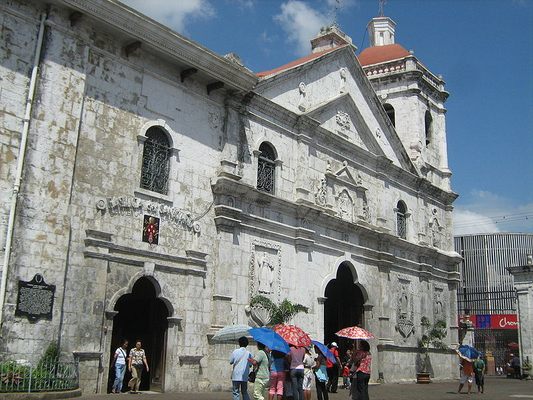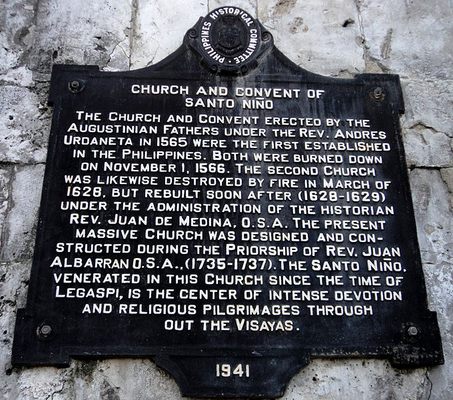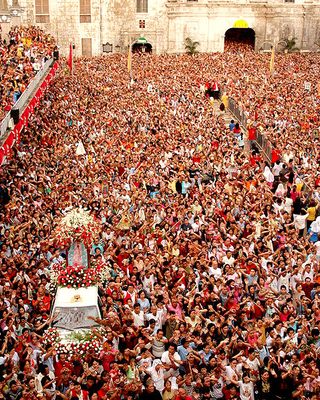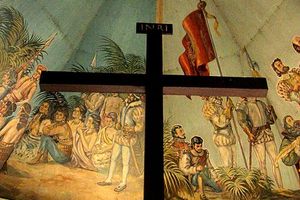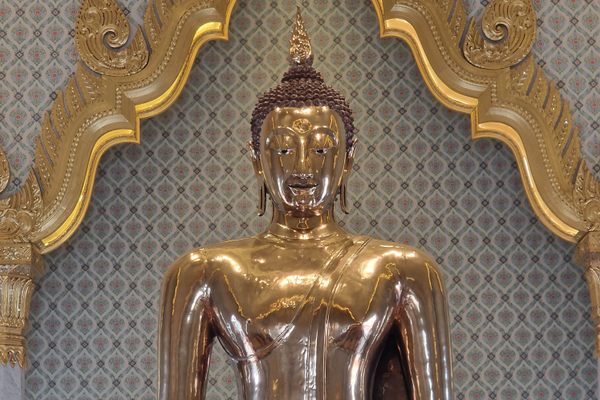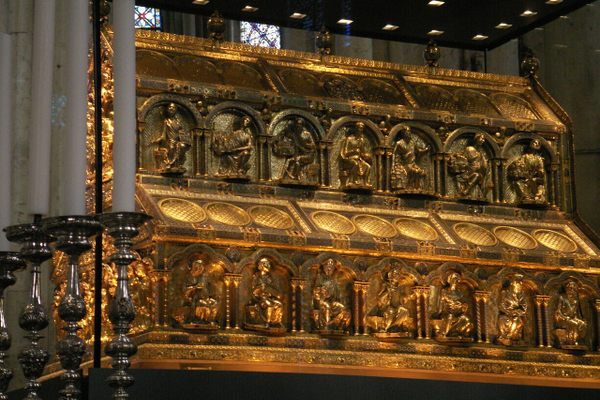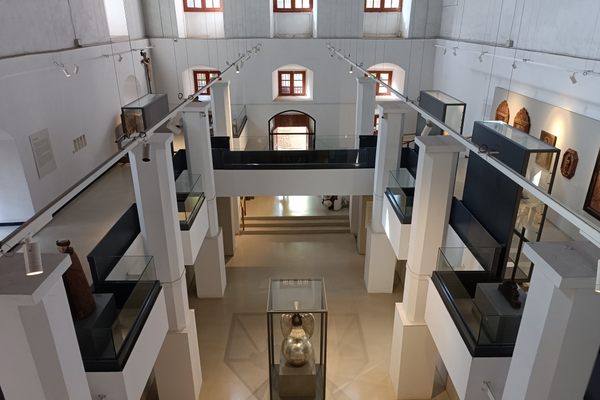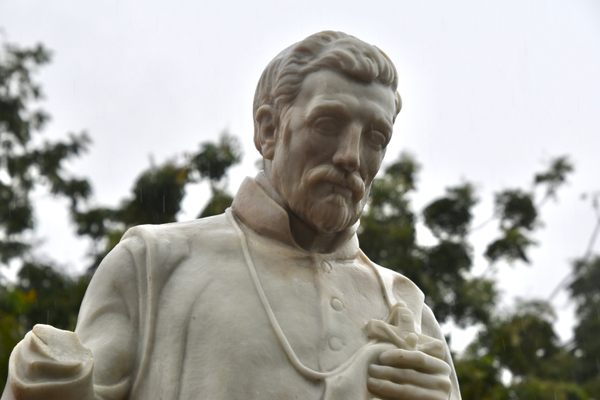About
Just before everything went horribly wrong and he wound up dead on the beach of Mactan Island, the Portuguese explorer Ferdinand Magellan presented this small sacred image, along with other religious gifts to the Cebu chieftain's principal wife, Hara Amihan, to celebrate their realm’s conversion to Catholicism.
The elaborately dressed, carved wooden figure, believed to be of Belgian origin, traveled with Magellan on his voyage of discovery and conquest from Spain to the Philippines, making this the oldest Catholic object in the islands.
After Magellan’s death at the hands of angry locals in April 1521, the little image of Jesus disappeared until 1565, when it was rediscovered by returning Spaniards. Its present shrine is the Basilica Minore del Santo Niño, said to be built over the burnt house where it was found in a box. The basilica has burnt to the ground twice, and bombed during World War Ii, but the little Santo Niño has escaped 'miraculously' unscathed. As the basilica is the oldest church in the country, it is titled “Mother and Head” of all other Catholic houses of worship.
The Feast of the Santo Niño is held nationwide on the third Sunday in January, with liturgies, dancing, and processions. This mirrors the preceding nine-day long Sinulog Festival in Cebú City, where fervent religious dancing follows that of Hara Amihan – christened Queen “Juana” – who was overjoyed at receiving the charming image. The whole event is marked by contests, parades, music, and street parties. Once the celebrations end, the little image has one last public appearance: the Hubo. As prayers are chanted, it is bathed in scented water and dressed in plainer robes, returning to its bulletproof altar where devotees visit it until the next January.
Magellan’s death, meanwhile, is re-enacted locally every April.
Related Tags
Know Before You Go
To see the actual image, one must enter the basilica itself. Visitors should dress respectfully: no shorts, no hats for men, and women are expected to cover their shoulders. A sarong can be used as a skirt in a pinch; little to no talk respects those who visit to pray.
Unlike Manila where Tagalog (standardised as Filipino) prevails, the main language in this part of the Philippines is Cebuano. As with other large cities in the Philippines, English is widely spoken and used as a lingua franca for those who speak other languages and dialects.
Community Contributors
Added By
Published
December 17, 2012

